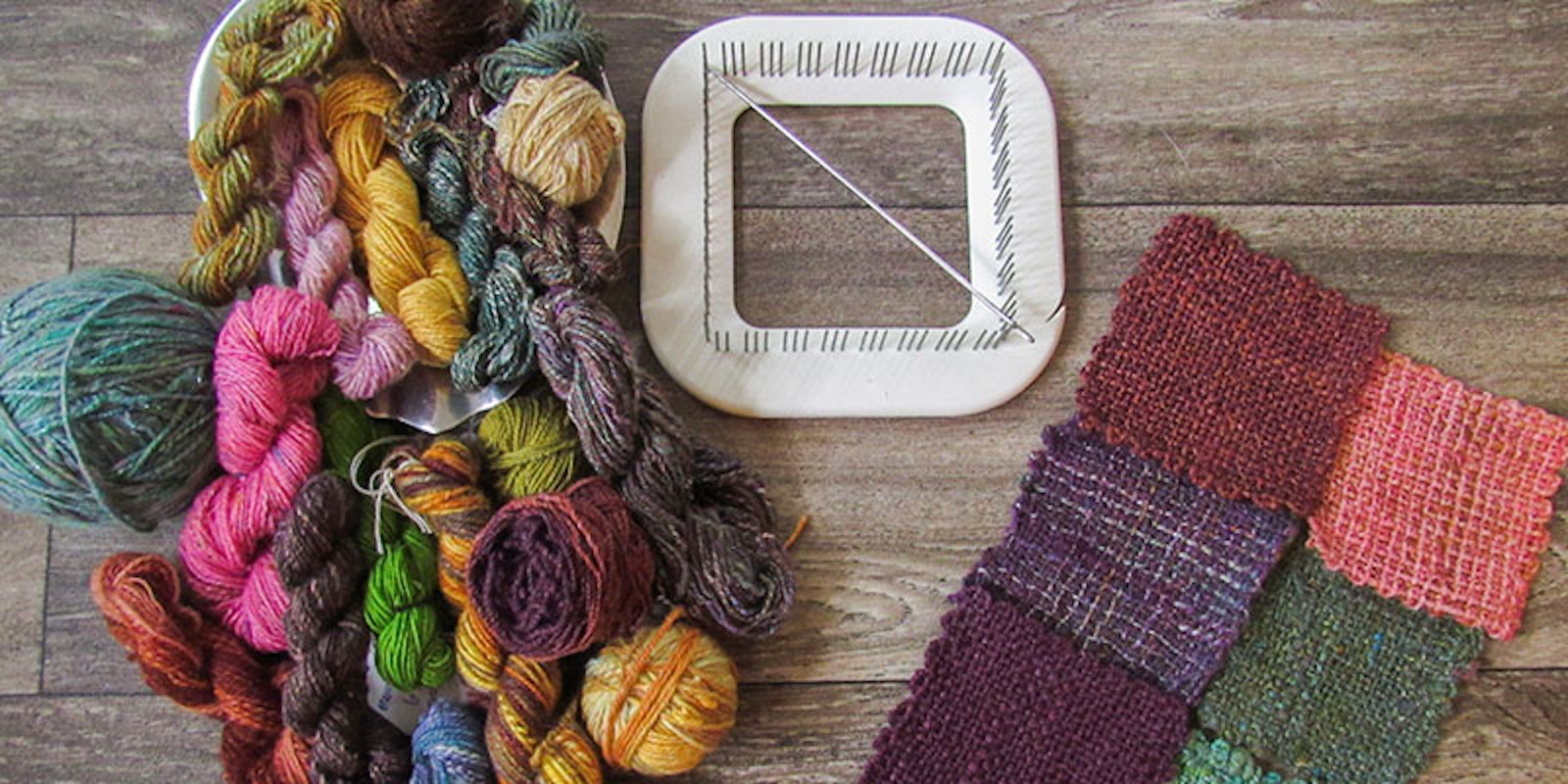From the moment I began weaving two years ago, I did so using my handspun and a 4 x 4-inch hand-held pin loom. Still today, despite my love affair with the rigid-heddle loom and learning to dress my new-to-me table loom, I use my pin loom for weaving at least weekly.
“But what do you do with all those squares?” is what most people want to know. For me, a near-daily spinner, my pin loom crush isn’t so much about the completed squares as the knowledge I gain from creating each one.
If you’ve ever wondered about the attraction such a small loom holds, pins or no, particularly for handspinners, here are my two cents on the matter.
5 Big Payoffs from a Small Loom
1. Perfect craft break Like many, I have days in which I can craft for only a few precious moments. Weaving a pin-loom square takes me roughly 20 minutes from warp to finish, and I enjoy not only the sense of having accomplished a Small Thing, but also the feeling of calm that working with my handspun brings me.
2. Spindle candy I love to spindle spin, and no fiber sample is safe from my spindle collection. Spinning 5–20 grams of fiber per spindle, I can try bits of interesting fibers and then use them to weave one or more squares.
3. Yarn economy Because it takes only 8 or so yards of yarn to weave a 4" square, why not weave with small lengths of handspun yarn? No handspinner wants to waste his or her precious handspun scraps.
4. Spinning education Weaving a small bit of fabric with various handspun yarns teaches me a great deal about their differences and similarities in elasticity, density, strength, luminescence, and more. I can see how my pre-spinning fiber preparations and drafting choices impact a plain weave. I think of it as general sampling, and I get to add more knowledge to my spinning and weaving toolboxes.
5. Repetition breeds creativity Time spent lost in the repetitive steps of weaving always helps to open my creative floodgates. It’s in these moments that I think of my next article submissions and design ideas. When I’m suffering from writer’s block or feeling unfocused, this small bit of crafting time brings me back to center. I’ll bet you would have similar results in your own field!
The beginning of a handspun, handwoven afghan.
Now, about what I do with my completed squares: I plan on invisibly seaming them together to form an afghan. The key will be seaming them in as I go and not waiting until the end (ugh). This way I’ll also be able to use and display it as the blanket grows. (Curious how to weave on a pin loom? Check out our tutorials on pin-loom weaving and seaming pin-loom squares with whip stitch.)
As you can see from my overflowing stash of handspun mini-skeins and leftovers, the color palette all works fairly well together. This is the case for most of our stashes, as we all have a tendency to purchase and then spin colorways that we find enticing. As for the yarn’s gauge, it’s okay to use a flexible range for this blanket project—a 4-inch square is a 4-inch square—though my collection here is mainly fingering weight spun worsted, woolen, and all the semis in between. Any variance will be dispersed over a larger fabric landscape, and that should work in my favor.
Time will tell, right? In the meantime, I’ll continue to enjoy the huge benefits of weaving with my little square pin loom. I hope you’ll give one a try!
—Debbie Held


